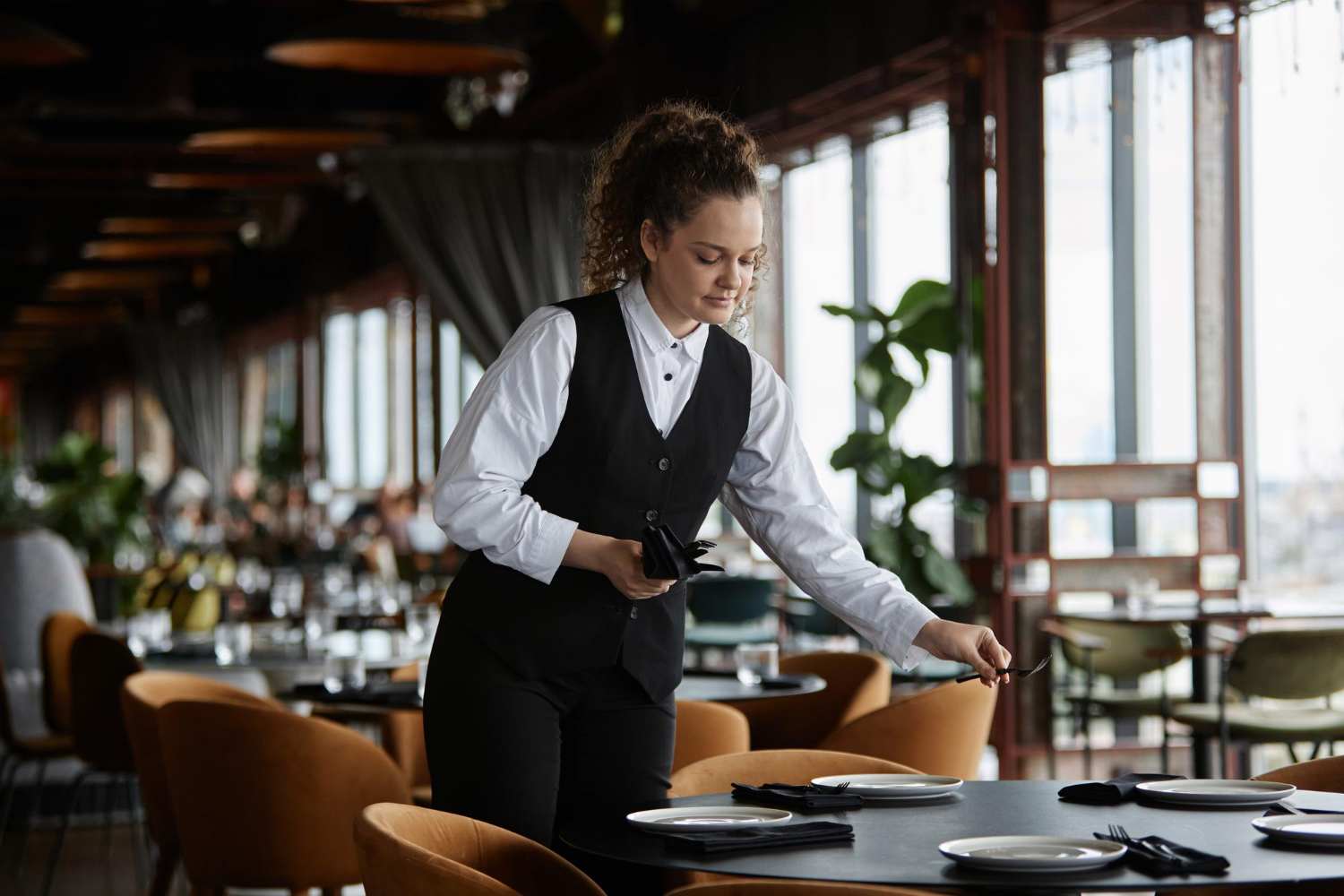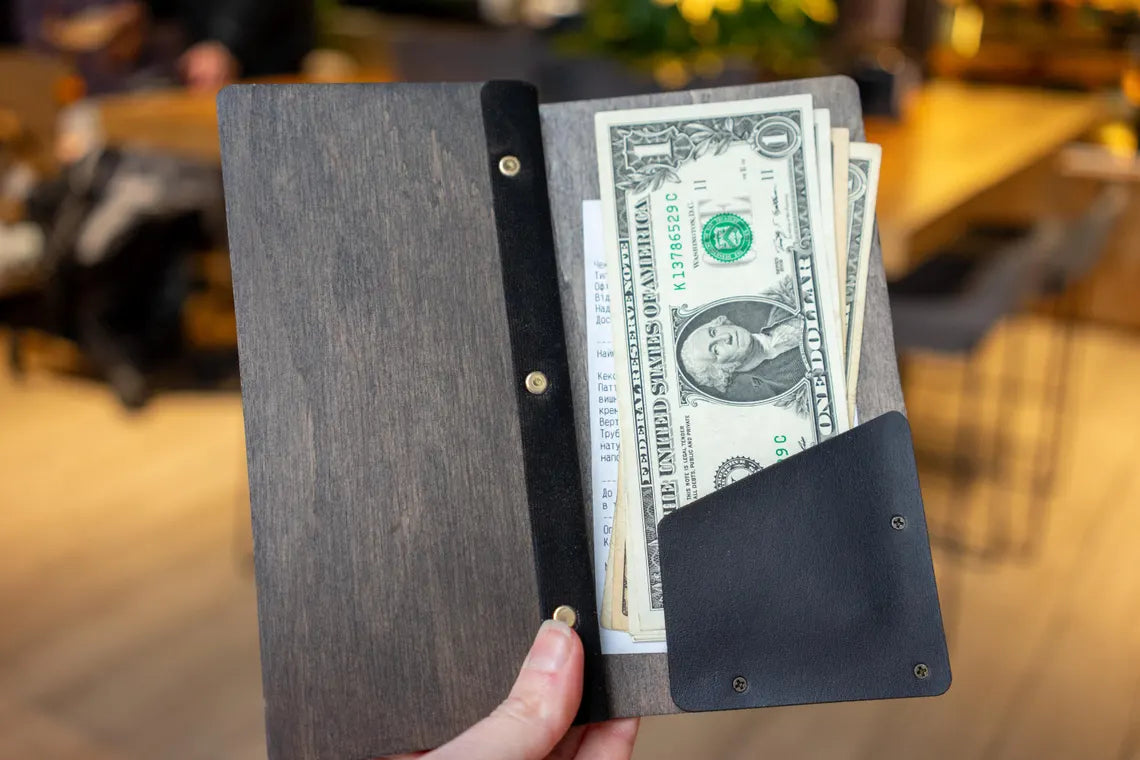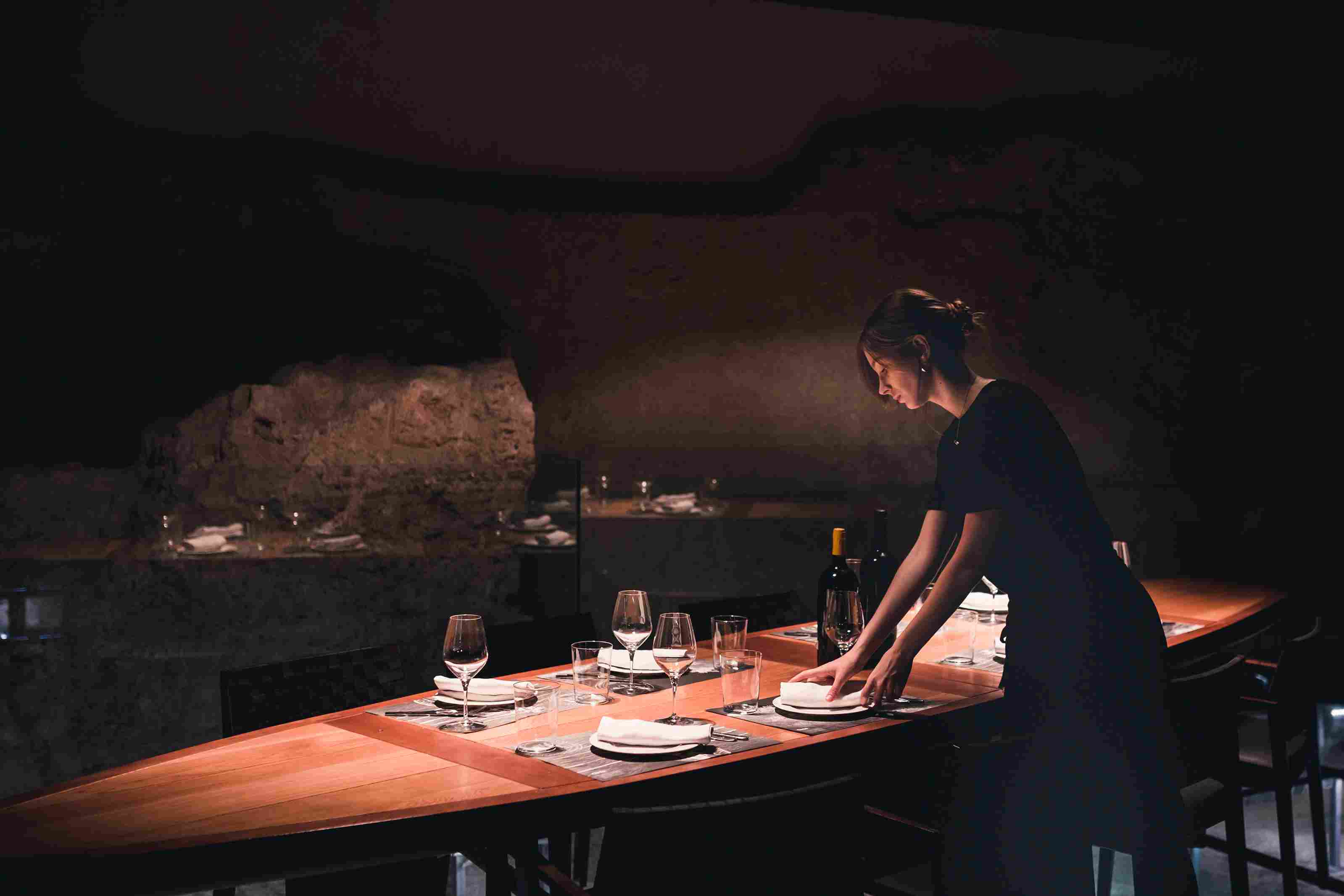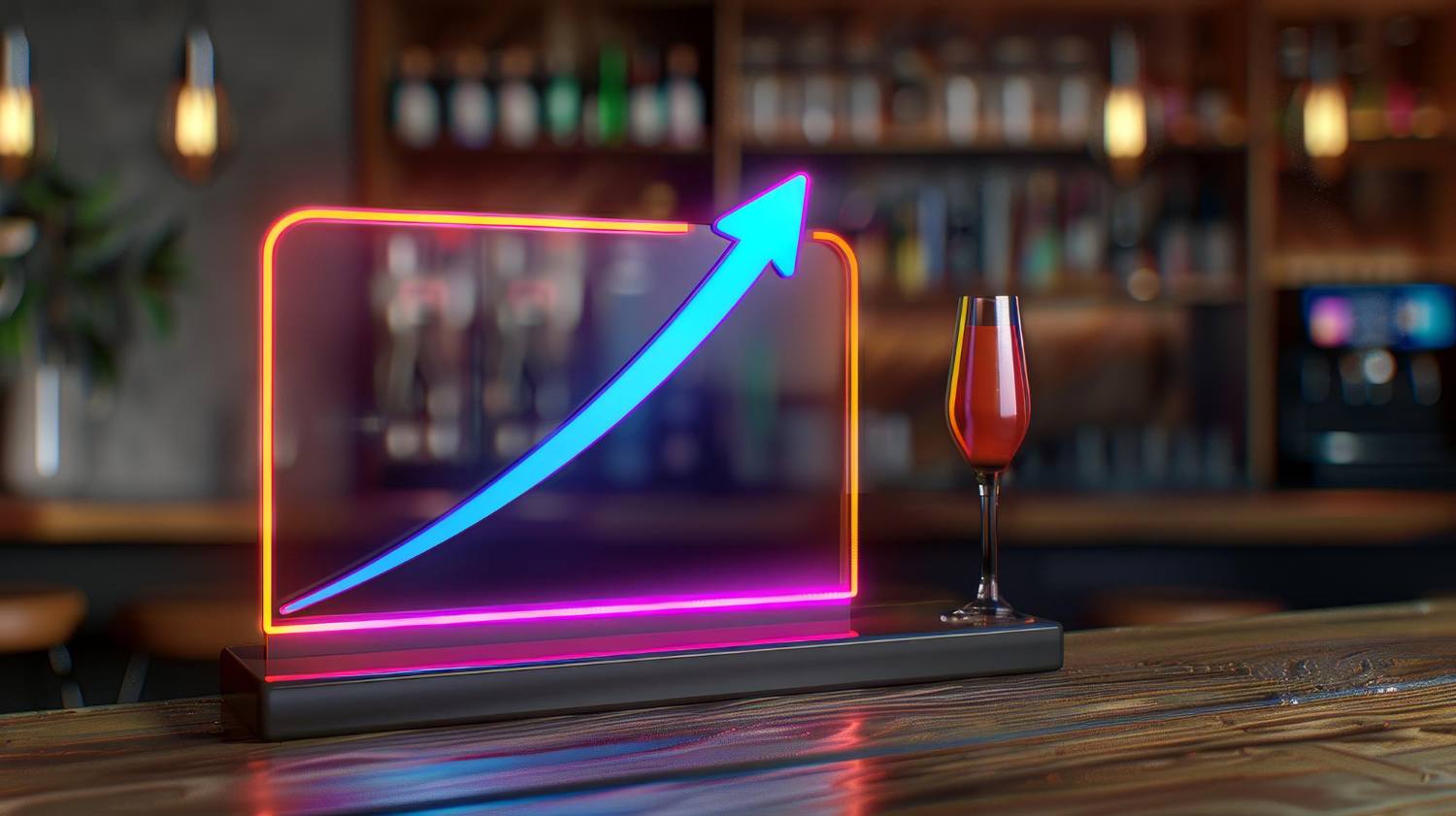
10 Stages of Professional Service in a Restaurant

Professional restaurant service creates memorable experiences that keep customers returning. The difference between good and exceptional guest service in restaurants lies in mastering a systematic approach that ensures consistency, efficiency, and genuine hospitality at every touchpoint.
Diners expect more than great food – they demand seamless service that anticipates their needs while embracing convenient technologies. QR Code menus or traditional Menu Covers both require mastering these fundamental service steps in restaurants to elevate your establishment above the competition.
Key Takeaway:
- What makes the first 30 seconds so critical for restaurant success? Guests form lasting opinions about service quality within 30 seconds of arrival.
- Which service stage has the biggest impact on customer satisfaction? The 2-3 minute check-back after food delivery.
- How can restaurants balance modern technology with personal hospitality? Use QR codes and digital systems to enhance efficiency while maintaining human warmth through genuine interactions.
- What's the most cost-effective way to improve restaurant service quality? Implement systematic training on the 10 service stages with consistent protocols.
How Much Revenue Are You Losing to Poor Service?
Quality service in restaurants forms the foundation of customer loyalty, positive reviews, and sustained profitability. Excellent service creates emotional connections that encourage repeat visits, while poor service drives customers to competitors regardless of food quality.
The hospitality industry continues evolving rapidly. Contactless ordering, digital payment systems, and sustainable practices have become standard expectations rather than novelties. Professional service now requires balancing technological efficiency with genuine human warmth – servers must be equally comfortable with QR Code systems and traditional face-to-face hospitality.
Restaurants that establish clear service protocols and train their teams systematically outperform those that rely on individual staff intuition alone. Consistency builds trust, while unpredictable service experiences frustrate guests and damage reputation through negative word-of-mouth and online reviews.
The 10 Stages of Professional Restaurant Service
Stage 1: The Welcome Experience (0-30 seconds)
First impressions set the entire dining tone. Professional guest service in restaurants begins the moment customers approach your establishment. The initial greeting creates an emotional foundation for the entire meal experience. Hospitality research indicates that guests form opinions about service quality within the first 30 seconds, making this stage crucial for success.
Staff should acknowledge guests immediately upon arrival through warm eye contact, genuine smiles, and welcoming language such as "Good evening, welcome to [Restaurant Name]." The host or greeter must quickly assess party size, check reservation status, and determine seating preferences while maintaining conversational warmth.
Establishments using QR Code menus benefit from briefly explaining the digital system during this welcome phase. This prevents confusion later while demonstrating technological sophistication. For health-conscious diners, offering hand sanitizer or directing them to contactless stations shows attention to safety protocols without disrupting the welcoming atmosphere.
Stage 2: Strategic Seating and Atmosphere Setup
Proper seating maximizes both comfort and operational efficiency. This stage requires balancing guest preferences with operational considerations like table turnover, server workloads, and kitchen timing. Strategic seating decisions impact everything from conversation quality to service speed.
Effective hosts personally escort guests rather than pointing directions, using the walk to highlight restaurant features or explain unique aspects of the dining room. During escort, observe guest dynamics to determine appropriate table selection—couples might prefer intimate corners, while business groups need spaces conducive to conversation.
Table preparation extends beyond cleanliness to include proper place settings, adequate lighting, and comfortable seating arrangements. When using traditional Menu Covers, ensure they're sanitized and positioned for easy access. Custom wooden menu covers require special care to maintain their quality and appearance. The goal is to create an environment where guests feel valued and comfortable before any food service begins.
Stage 3: Menu Presentation and Initial Beverage Service
Menu presentation is your first sales opportunity. Current restaurant trends show a growing preference for contactless menu access, making digital presentations increasingly important. However, successful establishments accommodate various comfort levels with technology.
For traditional Menu Covers, present menus from the guest's right side, opened to the first page to encourage immediate engagement. Digital QR Code systems require clear instructions and patience with less tech-savvy guests. Successful establishments maintain physical menu backups to ensure no guest feels excluded from the dining experience.
Initial beverage service creates the first sales interaction. Professional servers explain daily specials, seasonal offerings, and unique restaurant trends while taking drink orders. Allow 5-7 minutes for menu review, using this time to answer questions about ingredients, preparation methods, or dietary accommodations. This stage establishes the server's expertise and builds guest confidence in their recommendations.

Stage 4: Order Taking with Professional Expertise
Knowledgeable order-taking elevates servers from order-takers to culinary consultants. This critical stage requires comprehensive menu knowledge, active listening skills, and strategic upselling abilities. Professional servers understand not just what's on the menu, but how dishes are prepared, which ingredients might trigger allergies, and what combinations create memorable experiences.
Approach order-taking with attentive posture and systematic organization. Traditional etiquette suggests taking orders from female guests first, though contemporary service adapts to group dynamics. Repeat each order back for accuracy, demonstrating attention to detail while preventing kitchen errors that could derail the meal experience.
Strategic upselling during this stage can increase average check sizes through appropriate wine pairings, appetizer recommendations, or preparation upgrades. The key lies in reading guest cues and suggesting items that enhance their intended experience rather than simply increasing the bill.
Stage 5: Order Processing and Kitchen Communication
Seamless kitchen communication prevents delays and errors. This behind-the-scenes stage demands precise timing coordination, clear ticket prioritization, and effective special request handling. Professional staff understand that kitchen efficiency directly impacts guest satisfaction and table turnover rates.
Orders must be entered immediately into POS systems with detailed notes about allergies, cooking preferences, and special requests. Use standardized language that kitchen staff understand to prevent miscommunication. For complex dietary restrictions or special occasions, personal communication with kitchen staff ensures proper attention to guest needs.
Timing coordination becomes crucial for multiple courses or large parties. Professional servers track order progress, anticipate potential delays, and communicate proactively with guests when issues arise. Clear seat numbering systems and table diagrams prevent confusion during busy service periods, ensuring each dish reaches the correct guest.
Stage 6: Food Delivery and Presentation Excellence
Food delivery requires precision, grace, and performance awareness. Professional restaurant service delivery treats each plate presentation as theater, where proper food handling, temperature maintenance, and presentation skills create memorable moments. The journey from kitchen to table can make or break the dining experience.
Carry plates properly using service techniques that maintain food temperature and presentation quality. Never stack food plates or compromise presentation for speed. Announce each dish upon serving, especially for shared tables or complex preparations that might require explanation.
Always inspect plates before leaving the kitchen, checking for proper garnish placement, sauce consistency, and overall visual appeal. Ensure all accompaniments are present and that silverware matches the course being served. This attention to detail distinguishes professional service from casual food delivery.

Stage 7: The Critical Check-Back (Within 2-3 minutes)
The two-bite rule determines dining satisfaction. This stage often decides if minor issues become major complaints. Professional servers know that early intervention prevents escalation while demonstrating attentive guest service standards in restaurants. Research shows that 95% of guests will return if concerns are addressed quickly and professionally during this critical window.
Time check-backs carefully after guests have tasted their food, but before they've finished significant portions. Ask specific questions about preparation quality rather than generic "How is everything?" inquiries. Address concerns immediately with solutions rather than excuses, involving management when necessary to ensure guest satisfaction.
Use this opportunity to refill beverages, offer additional condiments, or suggest complementary items. The goal is to demonstrate attentiveness without interrupting the meal flow or appearing overly solicitous.
Stage 8: Ongoing Table Maintenance and Anticipatory Service
Exceptional service anticipates needs before guests ask. This continuous stage separates competent servers from exceptional ones. Professional staff develop the ability to read table dynamics, maintain cleanliness, and provide unobtrusive attention throughout the meal without disrupting conversation or intimacy.
Anticipatory service includes monitoring water levels, removing empty plates promptly after all guests finish each course, and providing additional napkins or silverware as needed. Clear table debris unobtrusively between courses to maintain the dining environment's cleanliness and visual appeal.
Balance attentiveness with respect for guest privacy. Some tables prefer minimal interaction, while others enjoy engaging with service staff. Professional servers adapt their approach based on guest cues while maintaining consistent service standards.
Stage 9: Dessert Service and Experience Extension
Dessert service extends the dining experience while creating additional revenue opportunities. This stage requires different skills from previous courses, focusing on indulgence, celebration, and memorable conclusions. Professional presentation of dessert options, coffee service, and after-dinner beverages can significantly increase average check totals when executed skillfully.
Present dessert menus with enthusiasm, describing preparation methods, seasonal ingredients, and special features that make each option appealing. Coordinate coffee and tea service timing to complement dessert courses, offering pairing suggestions that enhance both beverages and sweets.
Handle shared dessert requests gracefully, providing appropriate silverware and plate arrangements. Maintain table cleanliness throughout this extended service period, as dessert courses often involve longer conversation and relaxation periods that conclude the dining experience.

Stage 10: Check Presentation and Gracious Farewell
The final stage determines lasting impressions and return likelihood. Professional check presentation, payment processing, and farewell rituals complete the service cycle. This stage requires efficiency, accuracy, and genuine appreciation for the guest's patronage.
Present checks promptly when requested, ensuring accuracy in all charges and taxes. Process payments efficiently while maintaining security protocols for credit card transactions. Thank guests sincerely for their visit, using specific details about their meal or celebration when appropriate.
Assist with coats or belongings, escort guests to the door when possible, and extend genuine invitations to return. QR Code payment systems can streamline this process while maintaining personal connection through verbal appreciation and farewell gestures. For establishments using custom wooden Menu Covers from craftsmen like KyivWorkshop, ensure these premium materials are collected and stored properly to maintain their quality and appearance.
Is Technology Destroying the Human Touch in Restaurants?
Training Your Team for Service Excellence
Consistent training creates consistent experiences. Professional service in a restaurant requires ongoing education, role-playing practice, and regular performance feedback.
Training components:
- Role-playing scenarios for each service stage
- Menu knowledge testing
- Customer service recovery techniques
- Technology integration (especially QR Code systems)
- Team communication protocols
Technology Integration Without Losing Human Touch
Restaurant trends emphasize balancing technology with personal service. QR Code menus, digital payment systems, and reservation apps enhance efficiency but should never replace genuine hospitality. The key is using technology to enable better service, not replace human interaction.
Best practices for tech integration:
- Train staff on all digital systems thoroughly
- Maintain traditional alternatives for less tech-savvy guests
- Use technology to gather customer preferences
- Leverage data to improve personalized service
Measuring and Maintaining Service Quality
Professional service requires continuous evaluation and improvement. Regular assessment through customer feedback, mystery shopping, and staff evaluations ensures standards remain high.
Key performance indicators:
- Greeting time consistency
- Order accuracy rates
- Table turnover efficiency
- Customer satisfaction scores
- Staff retention rates
Will Your Restaurant Lead or Follow Industry Service Trends?
Professional restaurant service excellence requires dedication, training, and continuous improvement. By mastering these 10 essential stages, restaurants create memorable experiences that drive customer loyalty, positive reviews, and sustained success. Upgrading your Menu Covers with custom wooden designs or implementing QR Code systems works best when exceptional guest service in restaurants combines systematic execution with genuine hospitality.
The investment in professional service training pays dividends through increased customer satisfaction, higher average checks, and improved staff confidence. As restaurant trends continue evolving, establishments that maintain these fundamental service standards in restaurants while embracing appropriate innovations will thrive in an increasingly competitive marketplace.





Leave a comment
This site is protected by hCaptcha and the hCaptcha Privacy Policy and Terms of Service apply.